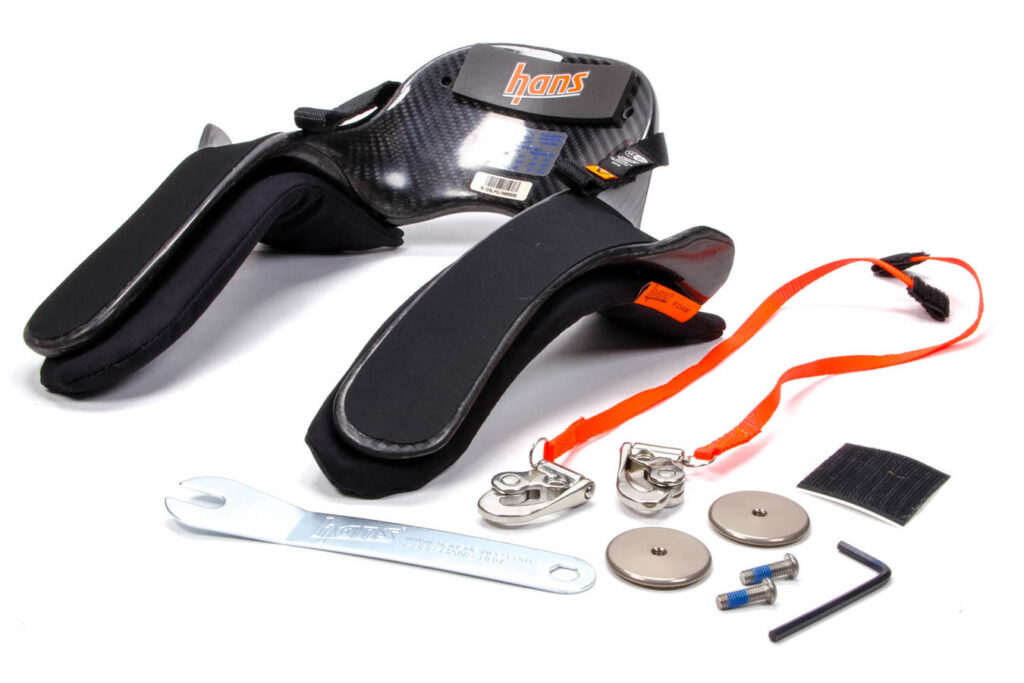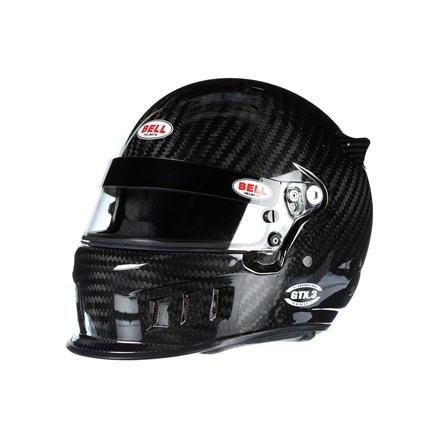Due to increased safety consciousness and the hard work of organizations like SFI and the Snell Foundation, race car drivers and spectators are much safer at the track than they are while driving to the track.
SFI, originally SEMA Foundation, Inc., was a spin-off of SEMA (Specialty Equipment Market Association), and was assigned the task of developing minimum product safety standards for racing equipment. Now an independent, non-profit organization, SFI works closely with manufacturers and sanctioning bodies to establish minimum safety standards and oversee the subsequent labeling of equipment for just about every facet of motorsports.
The Snell Foundation, named in honor of William “Pete” Snell, a racer killed in a crash, has dedicated itself solely to the maintenance and upgrading of helmet standards. The foundation tests thousands of helmets every year and those that meet their stringent standards have the well-known Snell logo and a number designating the specs and the year affixed.
SFI specifies standards for safety equipment including harnesses, helmets, and fire extinguishing systems; engine and driveline components including superchargers, balancers, flywheels and flex- plates, clutches and bellhousings; racing wheels; and all chassis components. It should be noted here that very few original equipment automotive components will meet minimum SFI standards.
Cooperation between safety groups and sanctioning bodies is invaluable in promoting safety because, as a rule, racers will purchase proper equipment if it is required by the sanctioning body, but usually will not if it’s left up to their own choice. For this reason, sanctioning bodies and safety organizations have a mutual responsibility to support each other.
SFI specs have contributed to monumental improvements in the design and building of chassis and related components. Rules concerning tubing diameter, wall thickness, and placement have resulted in stronger, more crashworthy chassis and rollcages which are often lighter than what the racer initially conceived.
Of course, a roll cage serves no purpose unless the driver remains in it during a crash. It doesn’t take a degree in physics to calculate the forces exerted on a harness when a car with 200-lb. driver hits the wall in excess of 150 MPH. Ultraviolet rays damage the fabric used in belts and harness assemblies, necessitating regular inspections for fraying as well as wear marks or abrasions. Major drag race sanctioning bodies and some oval track groups call for harness replacement every two years. SFI takes an active role in the determination of specifications for all harness components including fabrics, mounts, latches, and other hardware.
Another device that has become pretty much standard across the racing world is a head and neck restraint, commonly referred to as a HANS device. Designed to limit the sudden movement of the head and neck in the event of a crash, the HANS device can help reduce the risk of head and spinal serious injuries in the event of a frontal crash. Required by most professional racing bodies since the early 2000’s, they are available from a number of manufacturers.

Perhaps the most frightening and imposing threat to any driver is fire. Proban® and Nomex® are flame-retardant materials that give the driver precious additional seconds to emerge from the car without serious harm. Most circle track racing classes and drag race classes with cars that run quicker than 9.99 in the 1/4 mile require multi-layered suits that provide superior protection. Again, SFI invests many hours of research and testing to determine the flame-retardant nature of suit fabrics.
Fire-retardant driving gloves are equally important and SFI specifies usage for single- and double-layer gloves. When a fire occurs in the cockpit, often the first place a driver is burned is on the hands. Gloves, like a pair of old sneakers, get comfortable with age and are often hard to throw away. However, they too can lose their effectiveness with age. Racers have been fined by the NHRA for going through tech inspection with a new pair of gloves, and was later caught wearing an old pair in competition that didn’t meet current SFI specs.

“If you have a $10.00 head, buy a $10.00 helmet” was the slogan used by Bell Racing Helmets several years ago and that sentiment still holds true today. Nearly all racing organizations require a helmet approved by the Snell Foundation. The introduction of carbon fiber, Kevlar®, and other modern substances has revolutionized the helmet industry. The helmets are strong enough to meet Snell specifications and still lighter than any helmets available earlier on.

With constantly evolving standards, safety equipment can often become obsolete even if it’s in perfect physical condition. For example, Snell helmet standards typically update every 5 years, so the helmet purchased in 2014 with an SA2010 certification won’t be accepted by a track or sanctioning body that may now require a helmet meeting SA2015 or SA2020 standards, even if the helmet has sat in a box in the closet the whole time. When in doubt, it’s best to check the specific track or sanctioning body rule book for clarification While this may sound like little more than a way to make more money off racers, all gear deteriorates over time, regardless of whether it is used or not. The foam liner in a helmet will break down or harden, for example.
Have these safety organizations and their increasing focus on clearly defined standards and testing been effective? Compare speeds of race cars today with those of yesteryear and then note the drastic reduction in fatalities during that same span. The answer should be obvious.